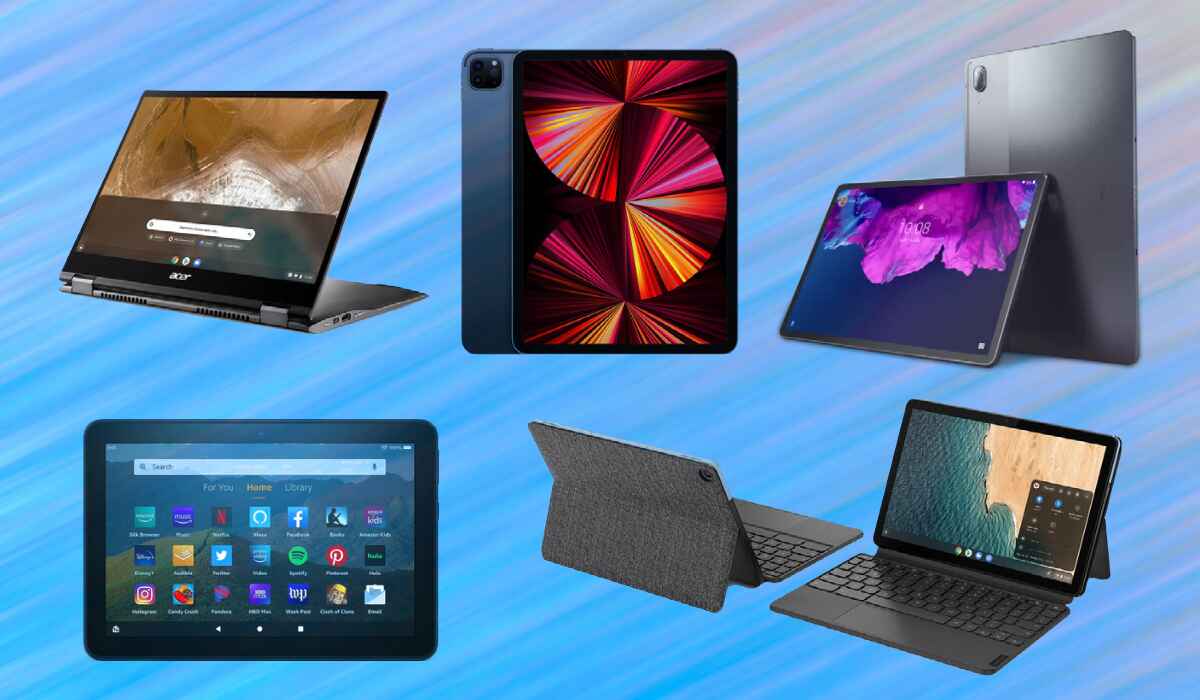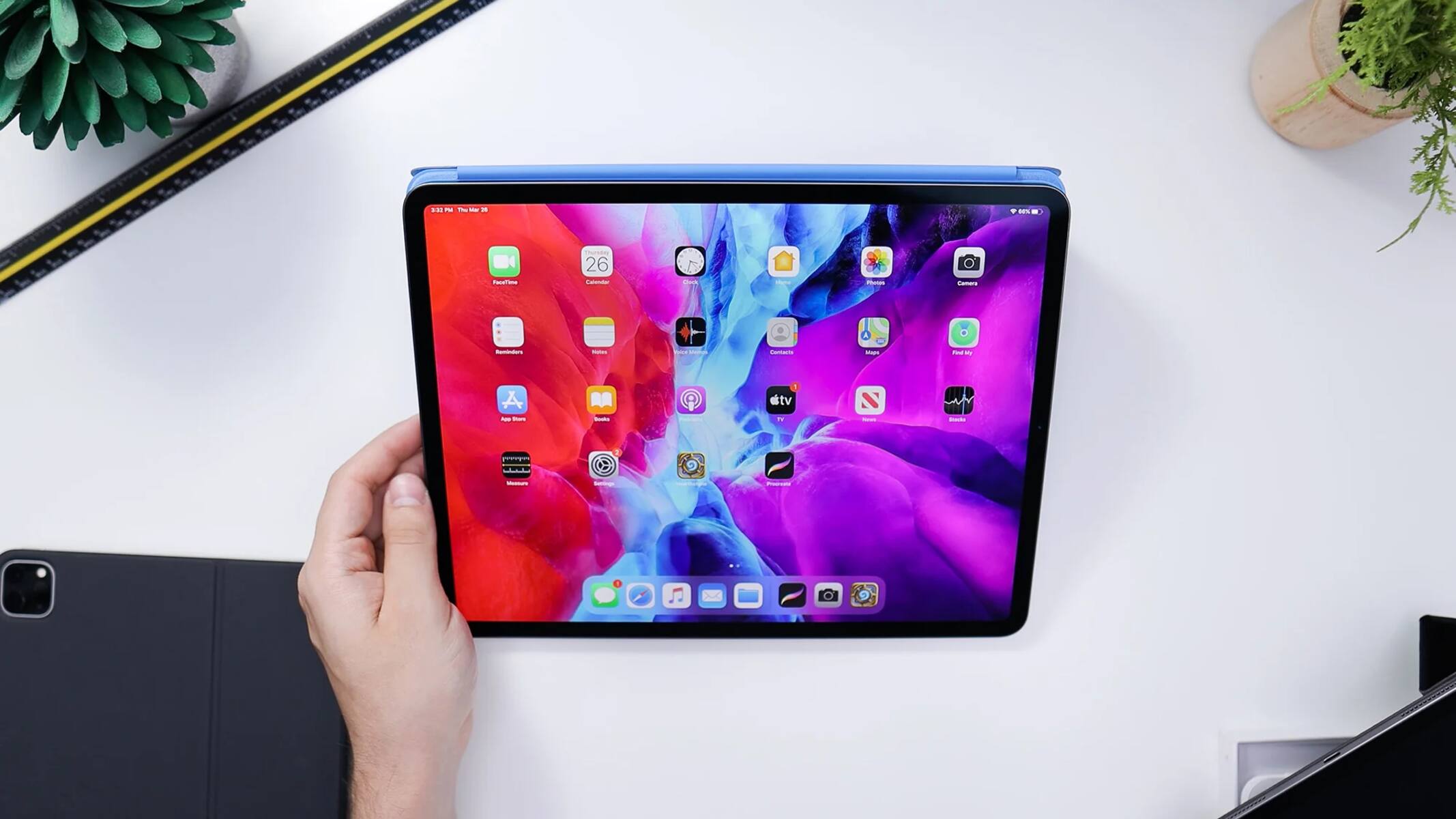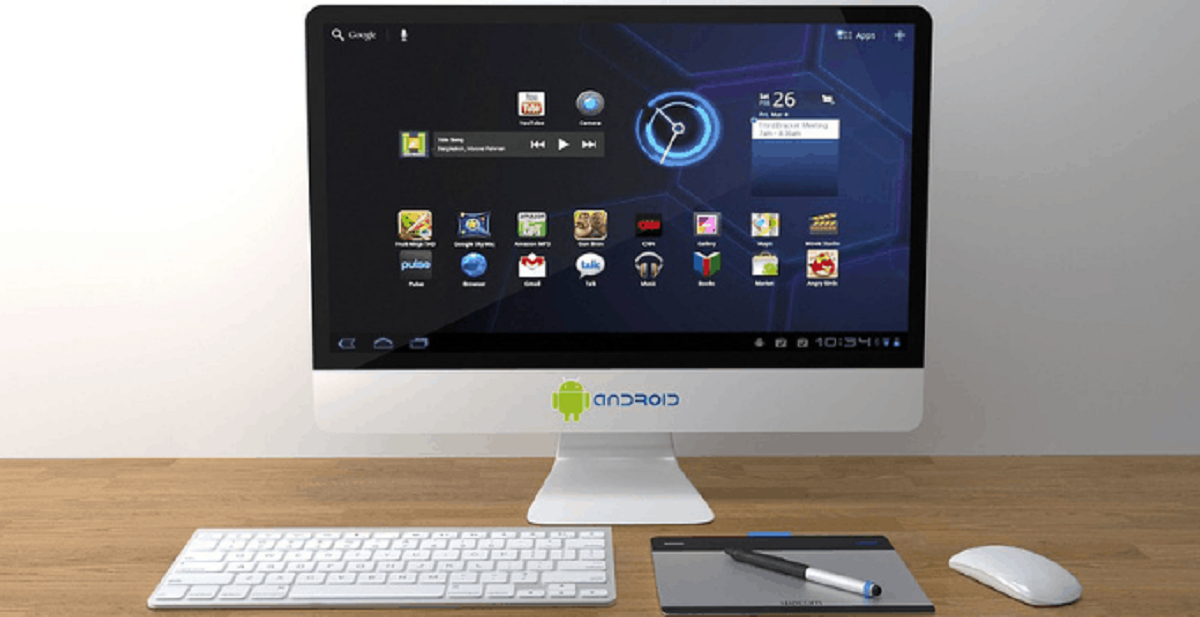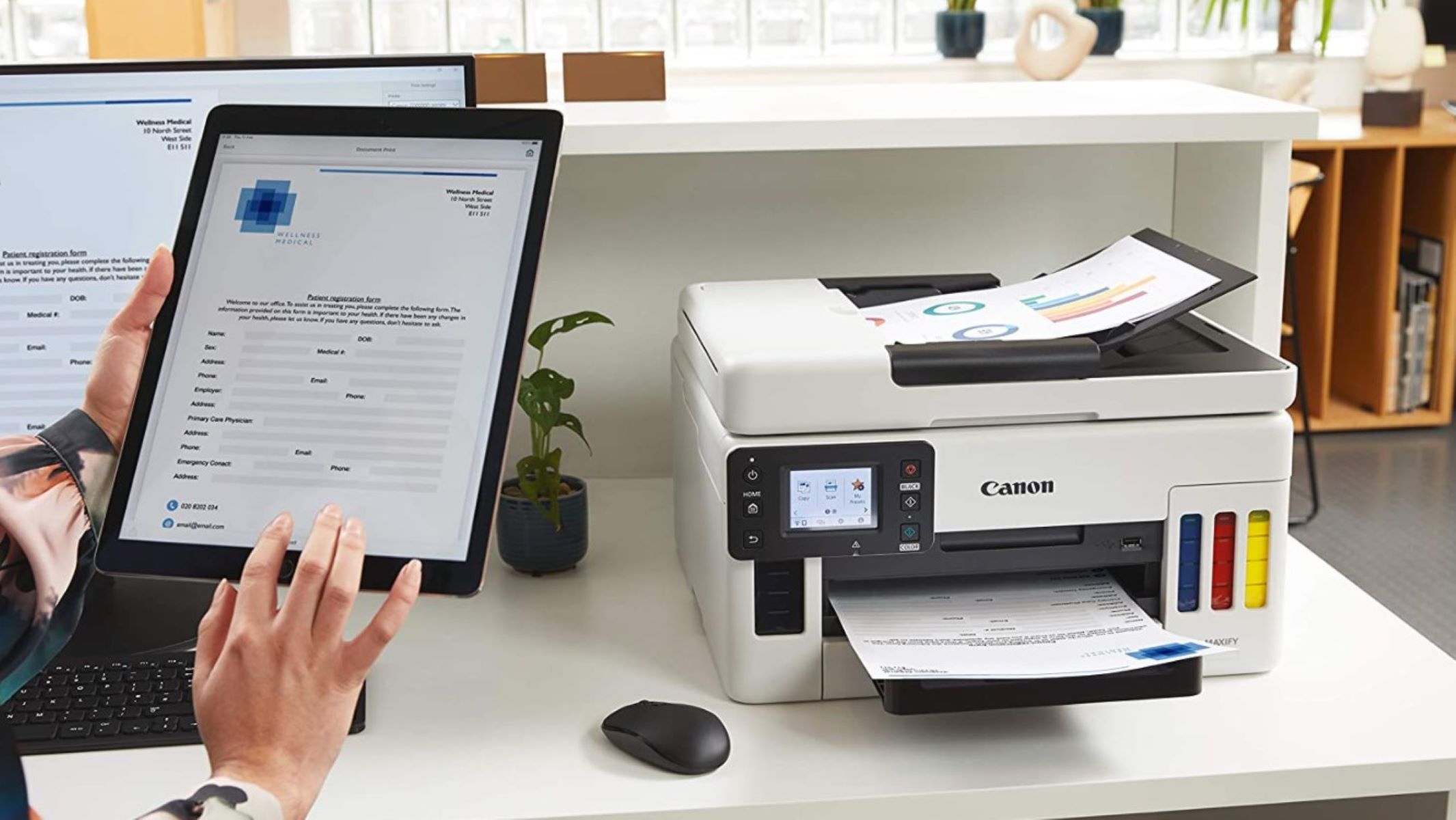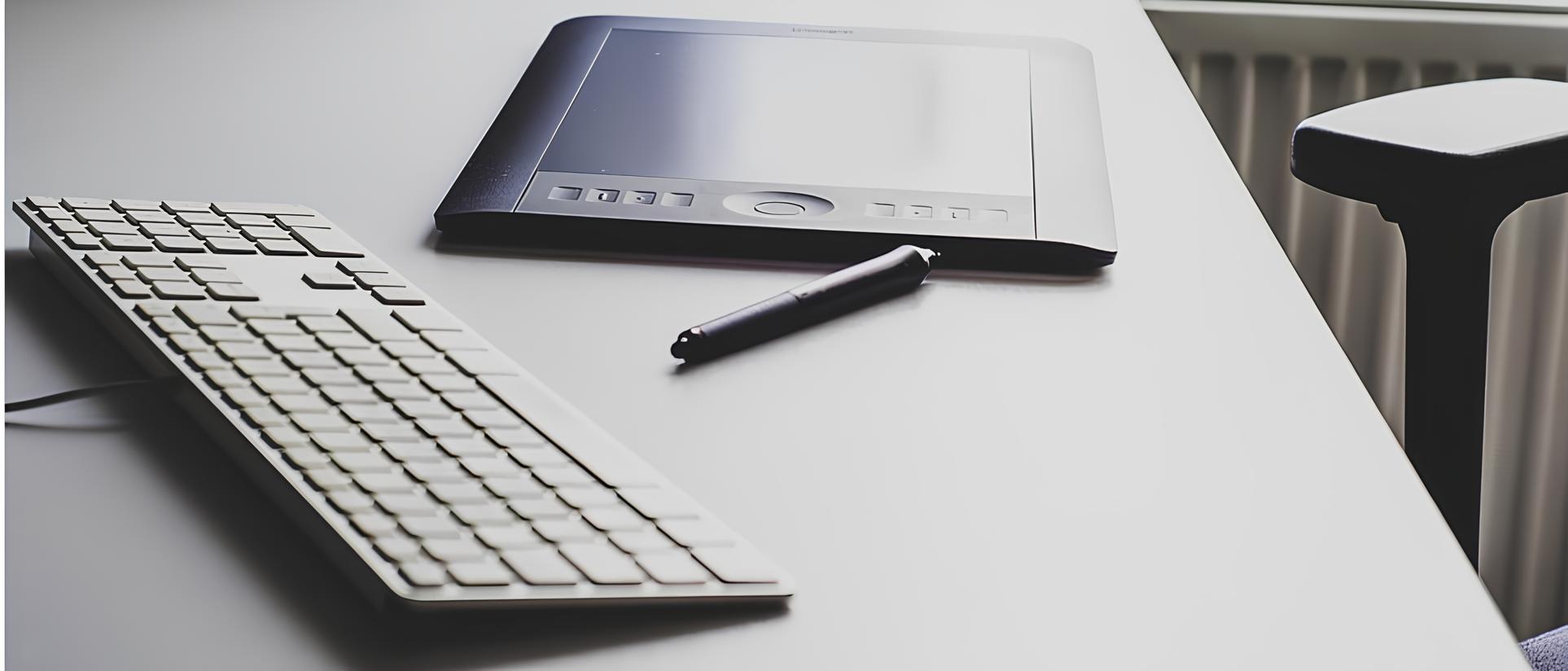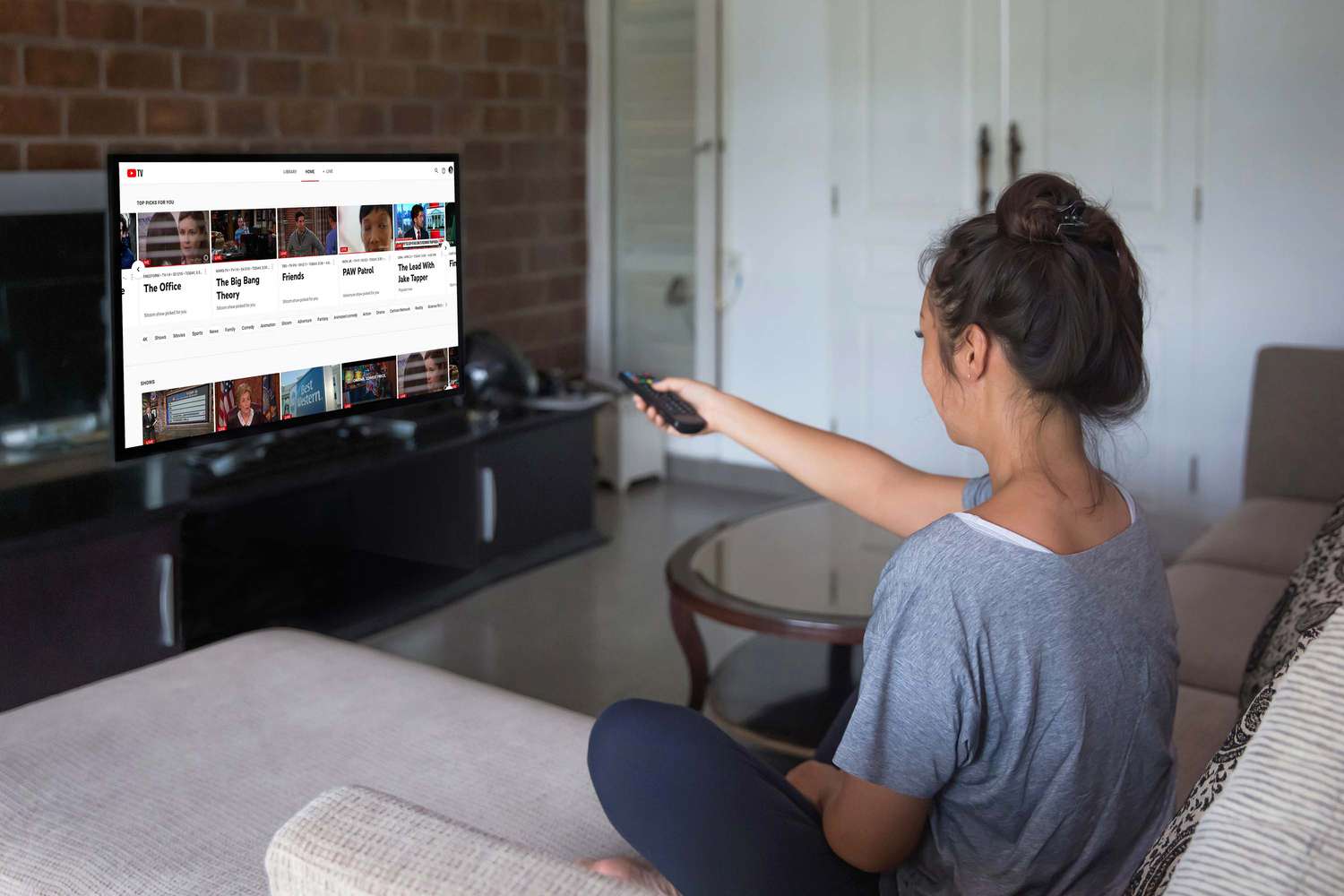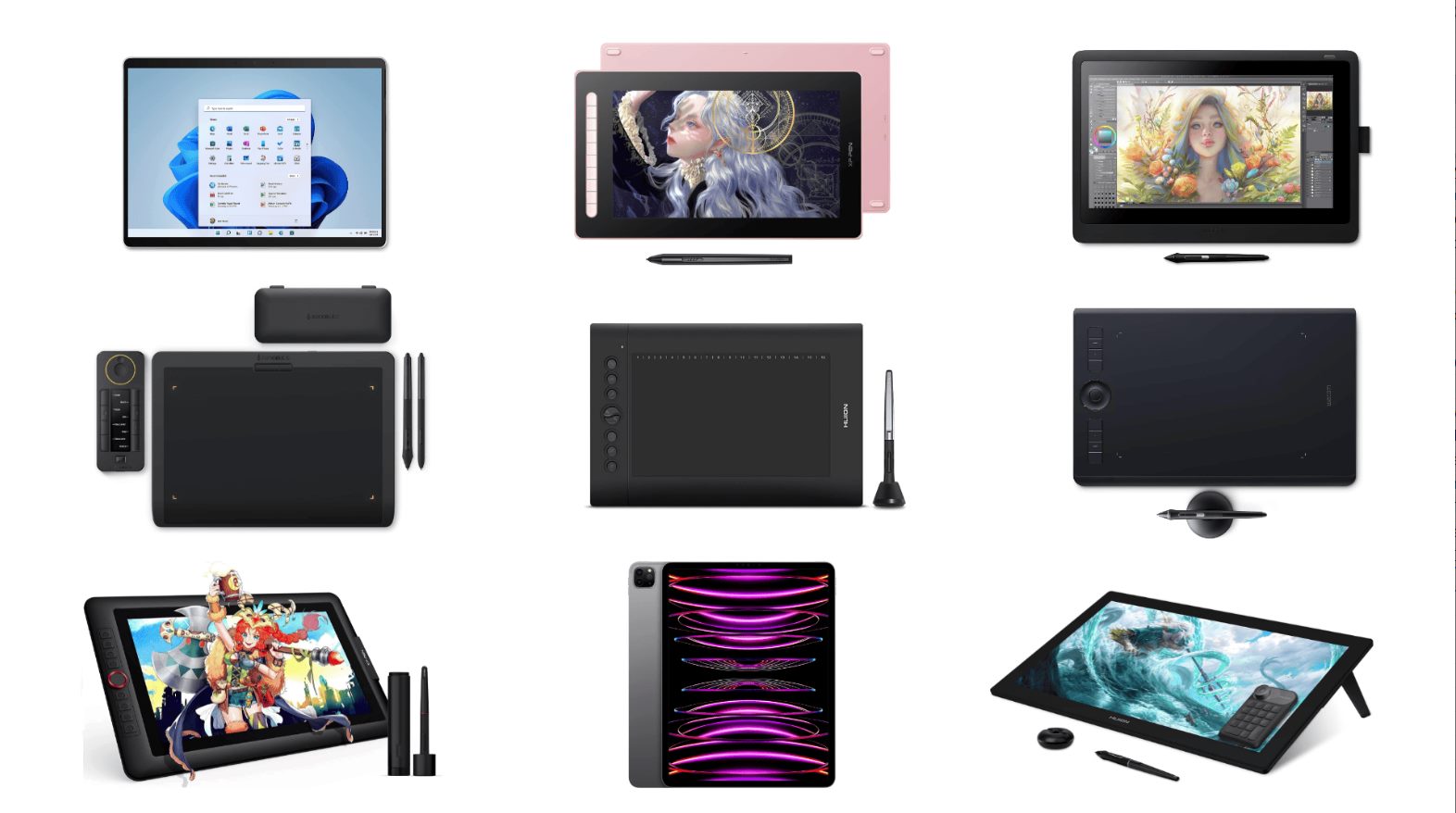Introduction
Tablet computers have become an integral part of our daily lives, offering a portable and convenient way to stay connected to the digital world. Whether for work, entertainment, or communication, tablets rely on an internet connection to provide access to a vast array of online services and content. But how exactly do these devices connect to the internet? In this article, we will explore the various methods by which a tablet computer can establish an internet connection.
There are two primary ways that a tablet can connect to the internet: Wi-Fi and cellular connectivity. Wi-Fi allows the tablet to connect to a wireless network, typically provided by a router or access point, while cellular connectivity enables the device to access the internet using a cellular network, just like a smartphone.
Wi-Fi connectivity is the most common method used by tablet computers to connect to the internet. It grants access to the internet by connecting to a local wireless network. This can be a home or office network, a public hotspot, or a Wi-Fi network provided by other establishments such as cafes, hotels, or airports. By connecting to a Wi-Fi network, a tablet can access high-speed internet without relying on a cellular network.
On the other hand, cellular connectivity allows a tablet to connect to the internet using a cellular network, similar to how a mobile phone operates. With a cellular connection, a tablet can access the internet from virtually anywhere, as long as it has signal coverage from a compatible cellular network. This option is especially useful for individuals who require internet access on the go, without the need for Wi-Fi networks.
To enable cellular connectivity, tablets often require a SIM card, which is a small, removable component that stores subscriber information and allows the device to connect to a specific mobile network. The tablet can then access the internet through the data network provided by the mobile carrier. The availability and compatibility of cellular connectivity may vary depending on the tablet model and the cellular network provider in your region.
In some cases, you may not have access to a Wi-Fi network or have a cellular data plan, but still need to connect your tablet to the internet. In these situations, you can utilize a mobile hotspot. A mobile hotspot acts as a portable Wi-Fi router, using a cellular data connection to create a Wi-Fi network that your tablet can connect to. This can be particularly useful when traveling or when you need to connect multiple devices to the internet at the same time.
In the following sections, we will delve deeper into the specific steps to connect a tablet to Wi-Fi and cellular data, as well as provide troubleshooting tips for common internet connection issues. By understanding these processes, you will be able to enjoy uninterrupted internet access on your tablet and make the most of its versatile capabilities.
Wi-Fi Connectivity
Wi-Fi connectivity is the most common method used by tablet computers to connect to the internet. It allows tablets to connect to a local wireless network, granting access to the internet without relying on cellular data. Whether you are at home, at a café, or in a public space, connecting your tablet to a Wi-Fi network is relatively simple.
To connect to Wi-Fi, start by ensuring that your tablet’s Wi-Fi feature is enabled. This can usually be done by accessing the device’s settings menu and navigating to the Wi-Fi section. Once enabled, your tablet will automatically scan for nearby Wi-Fi networks. These networks are displayed in a list, typically showing the name of the network, also known as the SSID.
Select the Wi-Fi network you want to connect to from the available list. If the network is secured, you will be prompted to enter the network’s password. Once you have entered the correct password, your tablet will attempt to establish a connection to the selected network. If successful, you will see a Wi-Fi icon or signal bars indicating that you are now connected to the internet through the Wi-Fi network.
It is important to note that while connecting to Wi-Fi networks, you may encounter various security configurations. Some networks may require a WPA or WPA2 password, while others may use less secure methods, such as WEP. It is recommended to connect to secure networks whenever possible to protect your personal information and ensure a safe browsing experience. Additionally, certain networks may require you to agree to terms and conditions before gaining access.
Once connected to a Wi-Fi network, your tablet can enjoy high-speed internet access, which is particularly useful when streaming media, downloading files, or engaging in online activities that require a stable connection. Additionally, connecting to Wi-Fi helps preserve your cellular data plan if you have limited data or are in an area with weak or no cellular signal.
In some instances, your tablet may have trouble connecting to a Wi-Fi network or maintaining a stable connection. If you encounter any issues, try restarting your tablet and the router. Also, ensure that you are within range of the Wi-Fi network and that no physical obstacles are obstructing the signal. If problems persist, double-check that you have entered the correct password or consider contacting the network provider for assistance.
In the next section, we will explore the alternative method of connecting to the internet using cellular data on your tablet. This option is particularly relevant for users who require internet access on the go or in areas where Wi-Fi networks are not available. By understanding both Wi-Fi and cellular connectivity, you can ensure that your tablet remains connected to the internet effortlessly.
Cellular Connectivity
Cellular connectivity provides tablets with the ability to access the internet using a cellular network, similar to how a smartphone operates. This option is especially useful when Wi-Fi networks are not available or when you require internet access on the go.
To connect a tablet to cellular data, you typically need a tablet with built-in cellular capabilities or a tablet that can accommodate a SIM card. The SIM card is a small, removable component that stores subscriber information and allows the tablet to connect to a specific mobile network. Insert the SIM card into the designated slot on your tablet, following the manufacturer’s instructions.
Once the SIM card is inserted, you need to ensure that you have an active cellular data plan with a mobile carrier. Contact the carrier or visit their website to sign up for a data plan that suits your needs. Upon activating the plan and inserting the SIM card, your tablet will be able to access the internet using the cellular network provided by the carrier.
To enable cellular data on your tablet, navigate to the device’s settings menu and locate the network or cellular data settings. From there, you can toggle the cellular data option to “On” or select the appropriate network provider from the available options. Once enabled, your tablet will establish a connection to the cellular network, and you will see signal bars or an indicator displaying the cellular network’s strength.
Cellular connectivity allows for internet access from almost anywhere, as long as you are within the coverage area of your mobile network. This makes it ideal for those who frequently travel or work remotely. However, it is essential to consider your data plan’s limitations and avoid excessive data usage to avoid incurring additional charges or exhausting your allocated data allowance.
Keep in mind that the availability and compatibility of cellular connectivity may depend on the tablet model and the cellular network provider in your region. Different tablets may support different network bands or technologies, such as 4G or 5G. Check with the tablet manufacturer or the carrier to ensure compatibility before purchasing or activating cellular data on your tablet.
In case you are unable to connect to the cellular network or experience issues maintaining the connection, try restarting the tablet or removing and reinserting the SIM card. Additionally, ensure that you are within the coverage area and that the cellular network’s signal strength is sufficient. If the problems persist, contact your mobile carrier’s customer support for further assistance.
Understanding how to connect your tablet to the internet using cellular data expands your options for staying connected, allowing you to access the internet even in situations where Wi-Fi networks are limited or unavailable. In the following sections, we will provide troubleshooting tips for common internet connection issues, ensuring that you can enjoy a seamless online experience on your tablet.
SIM Cards
SIM cards play a crucial role in enabling cellular connectivity on tablets. These small, removable cards contain subscriber information and are essential for establishing a connection to a specific mobile network. Here, we will explore the importance of SIM cards and how to use them effectively.
A SIM card, which stands for Subscriber Identity Module, is a small chip that you can insert into your tablet to enable cellular data access. SIM cards are provided by mobile network operators and are specific to each carrier. They come in various sizes, including standard, micro, and nano, depending on the tablet’s SIM card slot.
When you purchase a tablet that offers cellular capabilities, it may either have a built-in SIM card slot or require an external SIM card holder. If your tablet has a built-in slot, simply follow the manufacturer’s instructions to insert the SIM card. For tablets that require an external holder, carefully insert the SIM card into the holder and then insert the holder into the tablet’s appropriate slot.
Once the SIM card is properly inserted, you will need to activate it with a mobile network operator. This involves signing up for a data plan or activating an existing plan. Contact your preferred carrier or visit their website to choose a suitable data plan that fits your needs and budget. They will provide you with a SIM card that is associated with your account and plan.
It is essential to check the compatibility of your tablet with the network bands and technologies supported by the carrier. Different tablets may support various network frequencies, such as 4G or 5G, so it’s important to ensure compatibility to guarantee a seamless connection experience.
To use the SIM card for cellular connectivity, navigate to your tablet’s settings and locate the network or cellular data settings. From there, you should find an option to enable cellular data or choose the network provider associated with your SIM card. Once enabled, your tablet will establish a connection to the cellular network, and you will be able to access the internet through your data plan.
If you have multiple SIM cards from different carriers, you may also have the option to switch between them in your tablet’s settings. This can be useful when traveling or if you want to use a different data plan or carrier for specific purposes.
Remember to handle your SIM card with care and avoid removing it while your tablet is powered on to prevent any potential damage. Additionally, keep your SIM card in a safe place when not in use to avoid misplacing it or damaging its contacts. If you lose your SIM card or it becomes damaged, contact your mobile network operator to obtain a replacement.
Understanding how to correctly use and manage SIM cards is essential for cellular connectivity on tablets. By ensuring compatibility, activating the SIM card with a suitable data plan, and handling it with care, you can harness the full potential of cellular connectivity and enjoy seamless internet access on your tablet.
Hotspots
Hotspots have become increasingly popular as a way to access the internet while on the go or when Wi-Fi networks are unavailable. A hotspot is a portable device that uses cellular data to create a Wi-Fi network, allowing multiple devices, including tablets, to connect and access the internet. In this section, we will explore the concept of hotspots and how they can be used with tablet computers.
A mobile hotspot acts as a portable Wi-Fi router, utilizing a cellular data connection to create a Wi-Fi network that other devices, such as tablets, can connect to. These devices are often small and battery-powered, making them highly portable and convenient. Hotspots are typically provided by mobile network operators and can be rented, purchased, or included as part of a data plan.
To use a hotspot with your tablet, start by activating the hotspot device and ensuring that it is connected to the cellular network. The exact steps may vary depending on the hotspot device you are using, so refer to the manufacturer’s instructions for detailed guidance. Once the hotspot is activated and connected, it will generate a Wi-Fi network name (SSID) and password.
On your tablet, navigate to the Wi-Fi settings and search for available Wi-Fi networks. Locate the hotspot’s network name in the list of available networks and select it. If prompted, enter the password provided by the hotspot device. After successfully connecting, your tablet will be able to access the internet through the cellular data connection of the hotspot.
Using a hotspot enables your tablet to connect to the internet even in situations where Wi-Fi networks are limited or unavailable. This is particularly useful when traveling, attending conferences, or working in areas with weak or no wireless connectivity. Hotspots offer flexibility and convenience, enabling you to access the internet on your tablet and even share the connection with other devices simultaneously.
It is important to note that using a hotspot consumes cellular data from your data plan. Depending on your plan’s limitations and data allowance, excessive usage can result in additional costs or reduced network speeds. It is advisable to monitor your data usage and adjust your activities accordingly to avoid any unexpected charges or limitations.
In terms of battery life, both the hotspot device and your tablet will consume power while using a hotspot connection. It is recommended to have sufficient battery life or access to a power source to ensure uninterrupted usage. Furthermore, hotspots may also have limitations on the number of devices that can connect simultaneously, so be mindful of the device limits specified by your hotspot provider.
Using a hotspot with your tablet provides a flexible and reliable solution for internet access on the go. Whether you need to stay connected during travels or require a backup connection option, hotspots offer convenience and accessibility. By understanding how to connect your tablet to a hotspot, you can enjoy seamless internet browsing and online activities wherever you may be.
Connecting to Wi-Fi
Connecting to a Wi-Fi network is a straightforward process that allows your tablet to access the internet without using cellular data. Wi-Fi offers a convenient and high-speed connection option, so understanding how to connect your tablet to Wi-Fi networks is essential. In this section, we will guide you through the steps of connecting your tablet to Wi-Fi.
To begin, ensure that the Wi-Fi feature on your tablet is enabled. You can typically find this option in the settings menu, specifically under the network or Wi-Fi settings. Once enabled, your tablet will begin scanning for available Wi-Fi networks in the vicinity.
In the list of available Wi-Fi networks, you will see the names of nearby networks, usually referred to as SSIDs. Select the network you want to connect to by tapping on its name. If the network is secured, you will be prompted to enter the password or passphrase associated with that network. Carefully enter the password using the on-screen keyboard, ensuring you type it correctly. Some networks may also require additional information, such as a username or IP address configuration.
After entering the correct password or additional information, your tablet will attempt to establish a connection with the selected Wi-Fi network. If successful, you will see a Wi-Fi icon or signal bars on your tablet’s display, indicating that you are now connected to the internet through the Wi-Fi network.
It’s worth noting that certain Wi-Fi networks may have additional security measures in place. For example, some networks may require you to agree to terms and conditions before gaining access. In such cases, you will be redirected to a login or agreement page when attempting to connect to the network. Read through the terms, if provided, and agree to them to complete the connection process.
To ensure a safe and secure browsing experience, it is recommended to connect to secure Wi-Fi networks whenever possible. These networks use encryption protocols, such as WPA (Wi-Fi Protected Access) or WPA2, to protect data transmission. Public Wi-Fi networks, such as those found in cafes or airports, may have varying levels of security, so exercise caution when connecting to these networks and avoid transmitting sensitive information.
If you encounter difficulties connecting to a Wi-Fi network or experiencing a weak connection, there are a few troubleshooting steps you can try. First, ensure that you are within range of the Wi-Fi network, as the signal strength can diminish the further you are from the router. Additionally, check that no physical objects are obstructing the Wi-Fi signal, as these can interfere with the connection.
If problems persist, try restarting your tablet and the router to reset any temporary network glitches. Double-check that you have entered the correct password or passphrase for the Wi-Fi network. If you are still unable to connect, consider contacting the network provider or the owner of the Wi-Fi network for further assistance.
By understanding the process of connecting your tablet to Wi-Fi networks, you can enjoy high-speed internet access and make the most of your tablet’s capabilities. Wi-Fi connectivity provides convenience and flexibility, allowing you to browse the web, stream media, and communicate online without relying on cellular data. Whether at home, in a coffee shop, or while traveling, connecting to Wi-Fi networks is an essential skill for tablet users.
Connecting to Cellular Data
Connecting your tablet to cellular data allows you to access the internet from almost anywhere, even when Wi-Fi networks are unavailable. Cellular connectivity provides a reliable and convenient option for staying connected on the go. In this section, we will guide you through the process of connecting your tablet to cellular data.
Before you begin, ensure that your tablet has built-in cellular capabilities or supports the use of a SIM card. If your tablet requires a SIM card, check if you have one and make sure it is properly inserted into the designated SIM card slot.
To connect to cellular data, navigate to your tablet’s settings and locate the network or cellular data settings. Depending on your tablet’s operating system, the exact location of these settings may vary. Look for options related to mobile data or cellular connectivity.
Once in the correct settings menu, you should find an option to toggle the cellular data feature on or off. Enable the cellular data option by sliding the toggle switch to the “On” position. Alternatively, you may need to select your cellular network provider from a list of available options or enter the Access Point Name (APN) settings specific to your carrier.
After enabling cellular data, your tablet will attempt to establish a connection to the cellular network using the inserted SIM card. On your tablet’s display, you should see signal bars indicating the strength of the cellular network signal. The number of bars may vary depending on your location and network coverage.
Once connected to the cellular network, you will have access to the internet through your data plan. You can browse websites, use online services, and perform various activities that require an internet connection. However, it’s important to be mindful of your data plan’s limitations and avoid excessive data usage, as exceeding your data allowance may result in additional charges or reduced network speeds.
It’s worth noting that different tablets and cellular network providers may support different network bands and technologies. It is advisable to check with the tablet manufacturer and the carrier to ensure compatibility before activating cellular data on your tablet. This will help ensure a seamless and reliable cellular connection experience.
If you encounter issues connecting to the cellular network or experience a weak signal, there are a few troubleshooting steps you can try. First, ensure that you have a valid data plan with your mobile network operator and that it is active. Restart your tablet and, if necessary, remove and reinsert the SIM card to ensure a proper connection. Make sure you are within the coverage area of your cellular network, as signal strength can vary depending on your location.
If problems persist, contact your mobile network operator’s customer support for further assistance. They can provide guidance on network issues, troubleshooting steps, and any specific settings that may need to be configured on your tablet to establish a reliable cellular data connection.
By understanding how to connect your tablet to cellular data, you can enjoy seamless internet access on the go. Cellular connectivity expands your options for staying connected, ensuring you can access the internet wherever and whenever you need it. Stay productive, entertained, and connected by unlocking the power of cellular data on your tablet.
Troubleshooting Internet Connection Issues
While tablets are designed to provide seamless internet access, occasionally, you may encounter issues with your internet connection. Various factors can contribute to these problems, including network issues, software glitches, or incorrect settings. In this section, we will explore some common troubleshooting steps to help you resolve internet connection issues on your tablet.
1. Restart your tablet: The first step in troubleshooting any issue is to restart your tablet. A quick restart can often resolve temporary software glitches or connectivity hiccups.
2. Check Wi-Fi or cellular signal: If you are experiencing issues with a specific network, such as Wi-Fi or cellular data, verify that you are within range and have a strong signal. Move closer to the router or consider resetting the router to refresh the network connection.
3. Toggle Wi-Fi or cellular data: If you are unable to connect to a Wi-Fi network or cellular data, try turning off the respective feature in your tablet’s settings. Wait a few seconds, and then switch it back on. This can help establish a fresh connection.
4. Verify password and network details: Double-check that you have entered the correct password for the Wi-Fi network. If the connection requires additional settings, such as IP addresses or proxy configurations, ensure that you have entered the correct information.
5. Forget and reconnect to Wi-Fi network: If you are repeatedly unable to connect to a specific Wi-Fi network, try forgetting the network in your tablet’s settings. Then, reconnect as if you were connecting for the first time. This can help resolve any conflicting network settings or saved connection issues.
6. Update software: Ensure that your tablet’s operating system and applications are up to date. Software updates often include bug fixes and improvements that can resolve connectivity issues.
7. Clear cache and data: If you are experiencing internet connection issues with specific apps or websites, try clearing the cache and data for those apps in your tablet’s settings. This can help resolve any temporary data conflicts or corrupted information.
8. Reset network settings: If all else fails, you can try resetting the network settings on your tablet. This will erase saved Wi-Fi networks and cellular data configurations. You will need to reconnect to Wi-Fi networks and reconfigure your cellular data settings afterward.
9. Contact network provider or support: If the issues persist, it may be beneficial to reach out to your network provider’s customer support. They can assist in diagnosing network-related problems or provide specific troubleshooting steps tailored to your tablet and data plan.
Remember, the exact steps for troubleshooting may vary depending on your tablet’s model and operating system. It’s always a good idea to refer to the manufacturer’s support documentation or contact their customer support for more detailed guidance.
By following these troubleshooting steps, you can often identify and resolve common internet connection issues on your tablet. Stay connected and enjoy uninterrupted access to the digital world at your fingertips.
Conclusion
In today’s digital age, tablets have become indispensable tools for work, entertainment, and communication. Understanding how to connect your tablet to the internet is essential to fully utilize its capabilities. Whether it’s through Wi-Fi or cellular data, tablets offer versatile options to stay connected wherever you go.
Wi-Fi connectivity allows tablets to connect to local wireless networks, providing high-speed internet access without relying on cellular data. By understanding how to connect to Wi-Fi networks, you can enjoy fast and stable internet connections, whether at home, in public spaces, or at your workplace.
Cellular connectivity, on the other hand, allows tablets to access the internet over a cellular network, just like a smartphone. By using a SIM card or built-in cellular capabilities, you can enjoy internet access on the go, even in areas without Wi-Fi coverage. It offers flexibility and convenience, particularly when traveling or in situations where Wi-Fi networks are unavailable.
Hotspots provide an additional option for internet connectivity by creating portable Wi-Fi networks using cellular data. These devices allow multiple devices, including tablets, to connect and access the internet simultaneously. Perfect for travelers or those on the move, hotspots offer flexibility and ease of use.
Troubleshooting internet connection issues can be a common occurrence. By following the recommended troubleshooting steps, such as restarting your tablet, checking network signals, and verifying network settings, you can often resolve these issues quickly and effectively.
In conclusion, knowing how to connect your tablet to the internet and troubleshoot connection issues ensures that you can maximize the use of your device’s internet capabilities. Whether it’s Wi-Fi or cellular connectivity, being able to access the internet seamlessly allows you to stay connected, be productive, and enjoy a wide range of online activities. From browsing the web to streaming videos and communicating with others, your tablet becomes an invaluable tool in the digital world.









